What is Bounce Rate on a Website and How to Improve It
The bounce rate allows you to estimate the number of site visitors who didn’t view more than one page and left it too quickly without the targeted action. Suppose you’re an owner of a site and shop on the Internet, marketer, search engine promotion specialist, advertiser, or a site builder. In that case, it’s essential to understand what is bounce rate on a website and how to manage it. Let’s figure out what makes users leave the site, how to identify an ideal bounce rate, and when to expect high conversions.
Simple Example of What is Bounce Rate on a Website
Let’s say, every day, a site is visited by 180 people in search of the necessary information, goods, or services. Half of the users – 90 people – didn’t find what they were looking for on the first page and left the site. Another 90 people became interested in the content, and went to the second and third pages, bought or ordered something. As a result, there is a bounce rate of 50% since exactly half of the users left the first page.
Is There a Good or Bad Rate?
Remember that there is no actual bounce rate! It’s relative, but we can identify approximate standard rates:
- 70% or more is high, and you should sound the alarm
- 50-70% – average bounce rate typical for most websites
- 30-50% – an average bounce rate
- 25% and below are excellent indicators
Anyway, don’t be hung up on this data. Always pay attention to the site’s performance in general, conversions, sales, and satisfied clients! Of course, the lower the rate, the better it is for your site, and there is always something to improve, but only a detailed study of the analytic data can help you make accurate conclusions.

Biased Thoughts of What is Bounce Rate on a Website
If we take Google Analytics into account, it usually considers viewing one page without navigating to others and clicking buttons as an opt-out. What’s more, it presents landing pages with a high bounce rate since people often don’t take any action with them. It can be inconsistent because the users can get the information they need without clicking on everything, which is particularly true for blog posts or news.
And what is unfair – if you don’t even read the content but scroll through different pages and leave the site, the analytical system will show that everything is fine. In fact, there is no website conversion, and it makes no sense at all! That’s why it’s important to know what is bounce rate on a website.
When Bounce Rates Don’t Work
Undoubtedly, high bounce rates aren’t always alarming. It all depends on the type of site, its goals, and statistics! For example, a user visits a corporate taxi website. If he is interested only in the phone number, will he go to other pages after finding what he came for? At the same time, he makes a conversion – he calls the number and gets the car. In this case, Google Analytics will default to the session being refused. Therefore, a high bounce rate may indicate that the user has satisfied his request immediately.
All in all, there is no good bounce rate – you can only decide on a case-by-case basis considering the results.
Why People Leave Your Page
Now that you understand what is bounce rate on a website, let’s try to understand what things may not satisfy the user and point out the main reasons why people leave the site:
Metadata Doesn’t Match Content
If you’re satisfied with metadata description, want to learn more, go to a website, and don’t get necessary information or desired services/products, it makes you upset and increases bounce rate.
Slow Page Loading
Most users don’t wait for the loading of text and images – they start looking for another site, which means a high bounce rate.
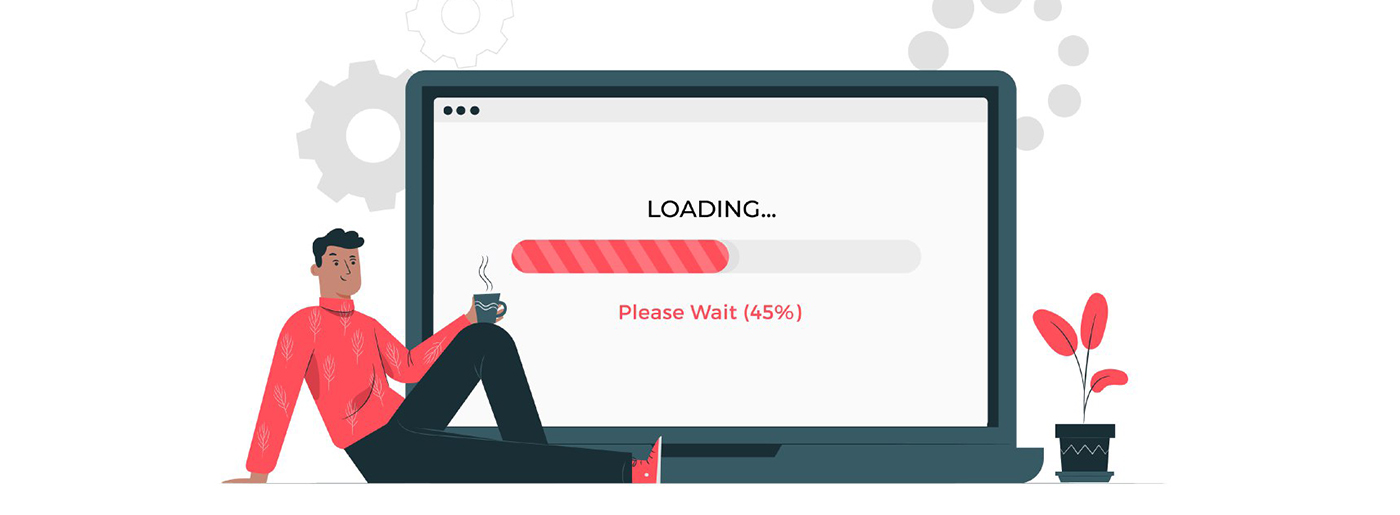
Poor Web Design
What discourages the desire to get acquainted with the content of the site:
- using bad contrasts (for example, red text on a green background);
- unsuccessful shade combinations;
- small print;
- poor formatting (no bold, italic, underline, etc.);
- inconvenient arrangement of blocks;
- small spacing between lines and paragraphs.
Inconsequent Content
Nobody is willing to read too much text. Imagine a girl who wants to buy a dress, but there is general information about clothes on the site instead of information about sizes, colors, and goods availability. Be sure she’ll leave the site and never return.
Inappropriate Headings
A home page is essential as a person decides whether to stay at the site while appropriate headings and subheadings catch his attention. Thus, unclear and inadequate titles without keywords discourage people from examining the platform.
Inconvenient Navigation
It’s difficult for visitors to get what they want without convenient navigation.
Annoying Range of Ads
No one can stand multiple ads – it distracts customers from the initial goal and makes them leave.
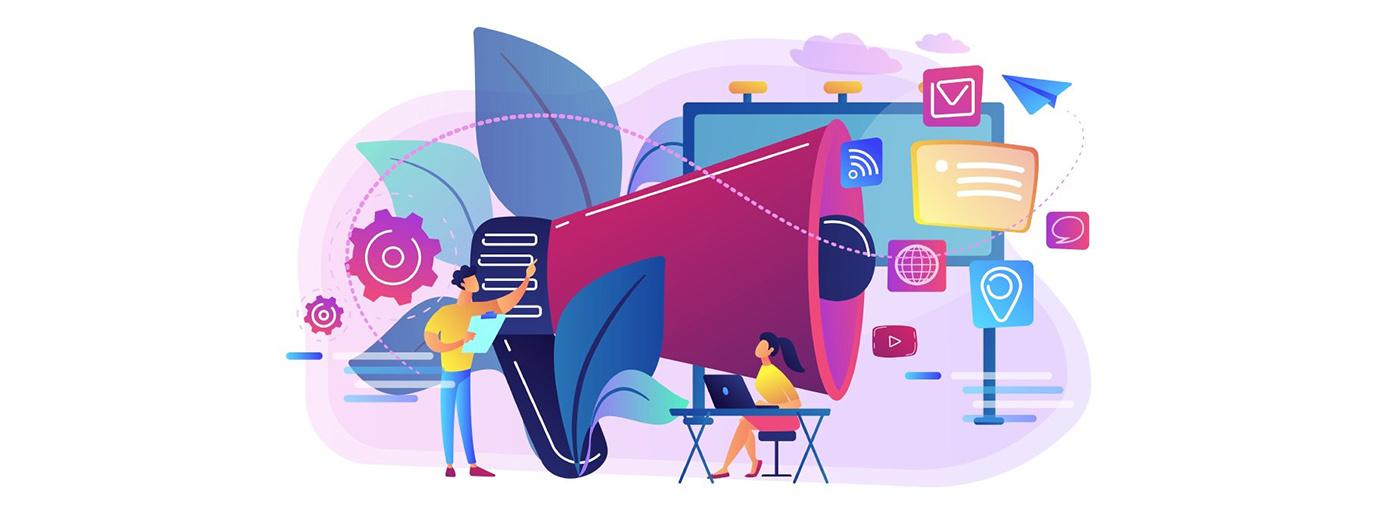
Irrelevant Traffic Use
There is no profit in advertising a page on sites with inappropriate visitors. There is no reason to increase traffic to any audience – pay attention to your target one!
Constant Pop-Ups
Audio or videos that play automatically and pop-ups make it impossible to concentrate on the content. It’s a real mood killer.
No CTA
No call to action, dedicated buttons, or icons lowers the product’s opportunity to be sold. Usually, if customers can’t quickly make an order or a filling form is inconvenient, they don’t waste their time trying to figure out how to buy a product.
No Internal Linking
Internal links make people go to other pages and useful sources of information. Moreover, it reduces the bounce rate.
Not Responsive Website
If the site doesn’t adapt to different screen resolutions, nothing good will come out.
What Is Bounce Rate on a Website – Other Side of the Coin
There are many factors why people leave your site, and you get a high bounce rate, but it’s not a warning bell every time. The site can function quite successfully and generate income with a lot of bounces. It is essential to focus on the result – profit. Analyze requests with a high bounce rate to understand what the user is missing.
However, if things are not going as well as you would like, this indicator must be considered. Also, search engines still count bounce rate because it shows your reliability and quality. So, there is a risk that after the next Google update, your site with high rates may end up at the bottom of search results.
How to Improve It
According to research, less than 10 seconds is enough for users to decide whether to stay on the site or not. So, if it’s already clear what is bounce rate on a website, you should follow some strategies to reduce high rates. Examine the situation to understand what people like or lack by the elements, buttons, and links. Therefore, create an understandable, responsive, and user-friendly platform.
Provide Fast Download Speed and Low Bounce Rate
Slow page loading directly affects the bounce rate and the ranking of a site. Don’t make users wait – reduce the weight of heavy design elements, and replace images.
Clear Content
You’ll achieve your goals only with well-thought-out content. Then you’ll season it with SEO optimization , convenient navigation, and other essential features we’ve pointed out in this article – and get a terrific website.
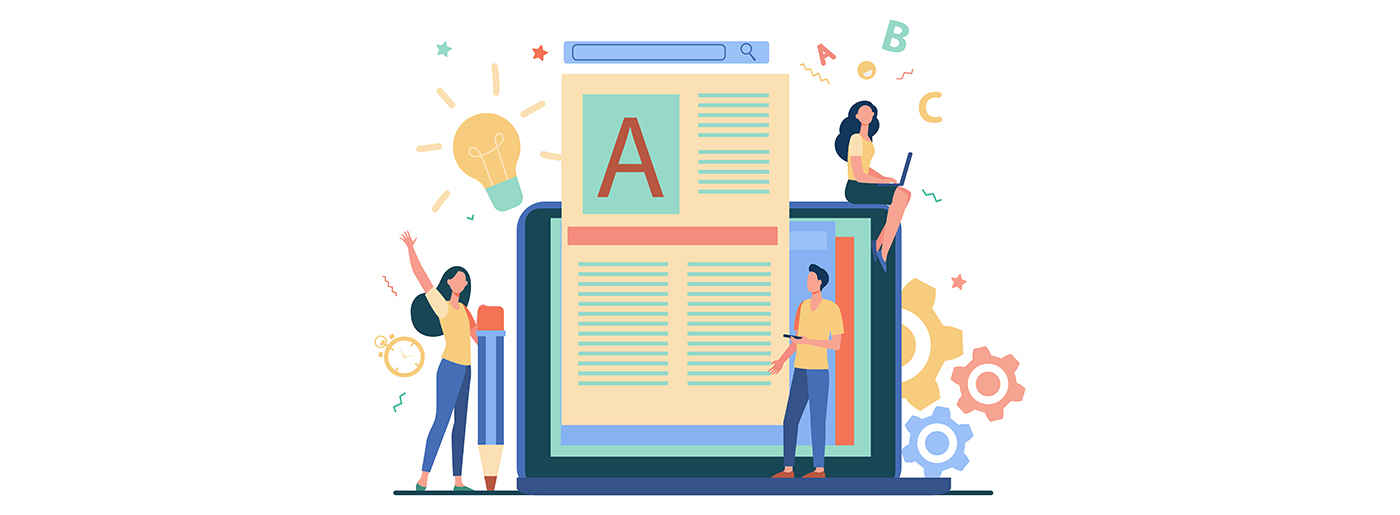
Attract Targeted Users
Stop using ads that do not bring valuable traffic! It’s better to concentrate on the content and your target audience. If your site is tailored for specific services, for example, legal activities or accounting, and you’re trying to attract visitors from social networks, where the target audience is teenagers and young people under 25, then the bounce rate will be too high. In such a case, you should improve your social media ad targeting – make your content message clear and attract potential clients.
Get Rid of Intrusive Ads
Don’t overload your page with annoying pop-ups, banner ads, and video ads. They are very irritating for the vast majority of users.
Upgrade Navigation and Website Design
Think of the site’s usability! Design pages according to users’ needs – they should understand that you can give them desired information in a blink of an eye. Also, when choosing colors for website elements, remember that there should be the contrast:
- background and content – both graphic and text;
- headings and body text;
- large font size( the minimum size is 16pt ).
It’s proven that web design elements impact conversions .
Encourage Users to Visit Other Pages
Besides all the essential tools, use interlinking to make people view more than one page. Don’t forget that your aim is not to get rid of a high bounce rate but to track the problems and improve conversions.
Highlight your CTA
Convert users to clients with a compelling image or line of text that encourages your potential customers to take action! However, this simple push-to-buy technique will only work if it’s relevant to the page – don’t try to fool visitors with inappropriate ads or content. Otherwise, you will have a high bounce rate.
Pay Attention to the Adaptiveness of Site
Check the pages’ content on both the desktop and mobile versions to make it easy to read and view on any screen! Thus, the bounce rate may vary between mobile, tablet, and desktop devices and indicate what version of your site should be optimized.
What is Bounce Rate on a Website – Use Polls on the Page
If you’ve figured out what is bounce rate on a website but still it’s not clear what’s wrong with rankings, conversions and why people leave your site, you can provide polls on the page and receive replies. It will help you understand what your clients need , what should be improved, and even reach the target audience.
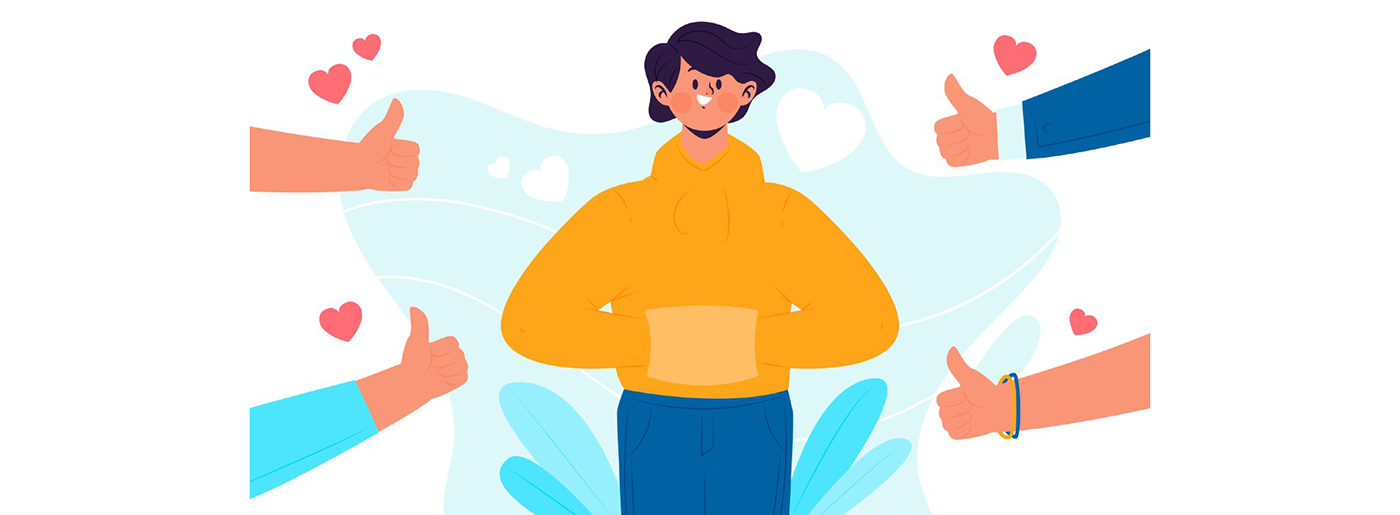
Adjusting Bounce Rate in Google Analytics Reports
Now you know what is bounce rate on a website, you understand that it may not be objective and doesn’t show the real assessment of user interaction with your site. Therefore, you should adjust it according to your needs. The most common ways of customizing bounce rate are considering
- Set scrolling depth (a perfect solution for blogs, content sites, and news).
- Set time the user should spend on your site (great for sites with video content).
These approaches are beneficial for sites where users get the information without clicking. In such a case, if a person leaves without action, it isn’t counted as an opt-out leading to a high bounce rate.
What is bounce rate on a website? It’s the harmony between the indicators and successful results.
Get Necessary Results with a Line of Code
All you need to do is add just one line to the source code hosted on your web resource. It will calculate the Bounce Rate in a new way. After you add it, sessions longer than 15 seconds won’t affect bounce rate, even if no clicks or actions are taken. You should add the snippet in the middle of the code or before the closing script tag:
- setTimeout (“ga (‘send’, ‘event’, ‘read’, ’15_seconds’)”, 15000). In such a case, it’ll look like this:
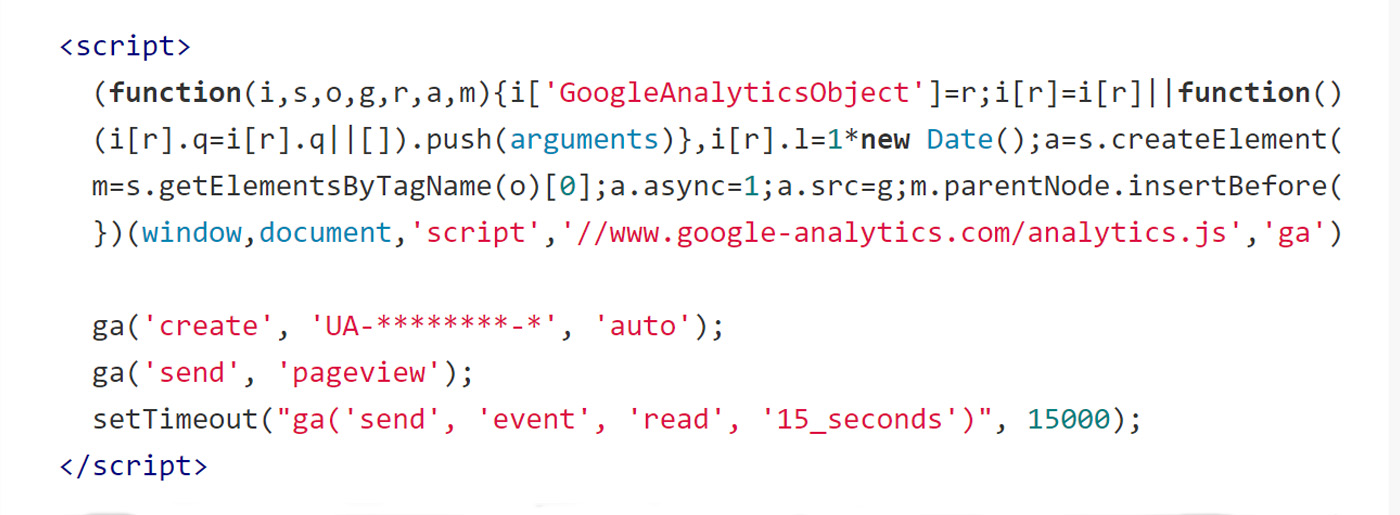
We hope this tip will be useful for you!
SEO, Bounce Rate, and Website Rankings
It’s a myth that search engines take into consideration what is bounce rate on a website. If you aren’t at the top of results and have high bounce rates, it can only mean that you have poor content without SEO optimization. Moreover, it means that you can’t encourage users by your site – it’s not exciting and doesn’t meet expectations. So, it isn’t a straight indicator for rankings, but everything is tightly connected.
What Is Bounce Rate on a Website – Let’s Sum Up
Bounce rate indicators may be controversial in many cases(especially for landing pages, blogs, news posts). Still, understanding how to operate them gives you essential information about your target audience and the necessary improvements:
- It would be best if you didn’t rely only on bounce rate.
- Examine changes in the bounce rate to analyze the situation and react on time. Thus, you can understand what works for potential customers and what doesn’t.
- Identify your target audience.
- Don’t deceive users – try to meet their expectations and be honest.
- Create an adaptive, user-friendly site with a clear structure and content.
- Experiment with new designs that will attract the audience.
And the last significant piece of advice – follow all the described tips above to get a lower bounce rate and higher conversions.




Leave a Reply